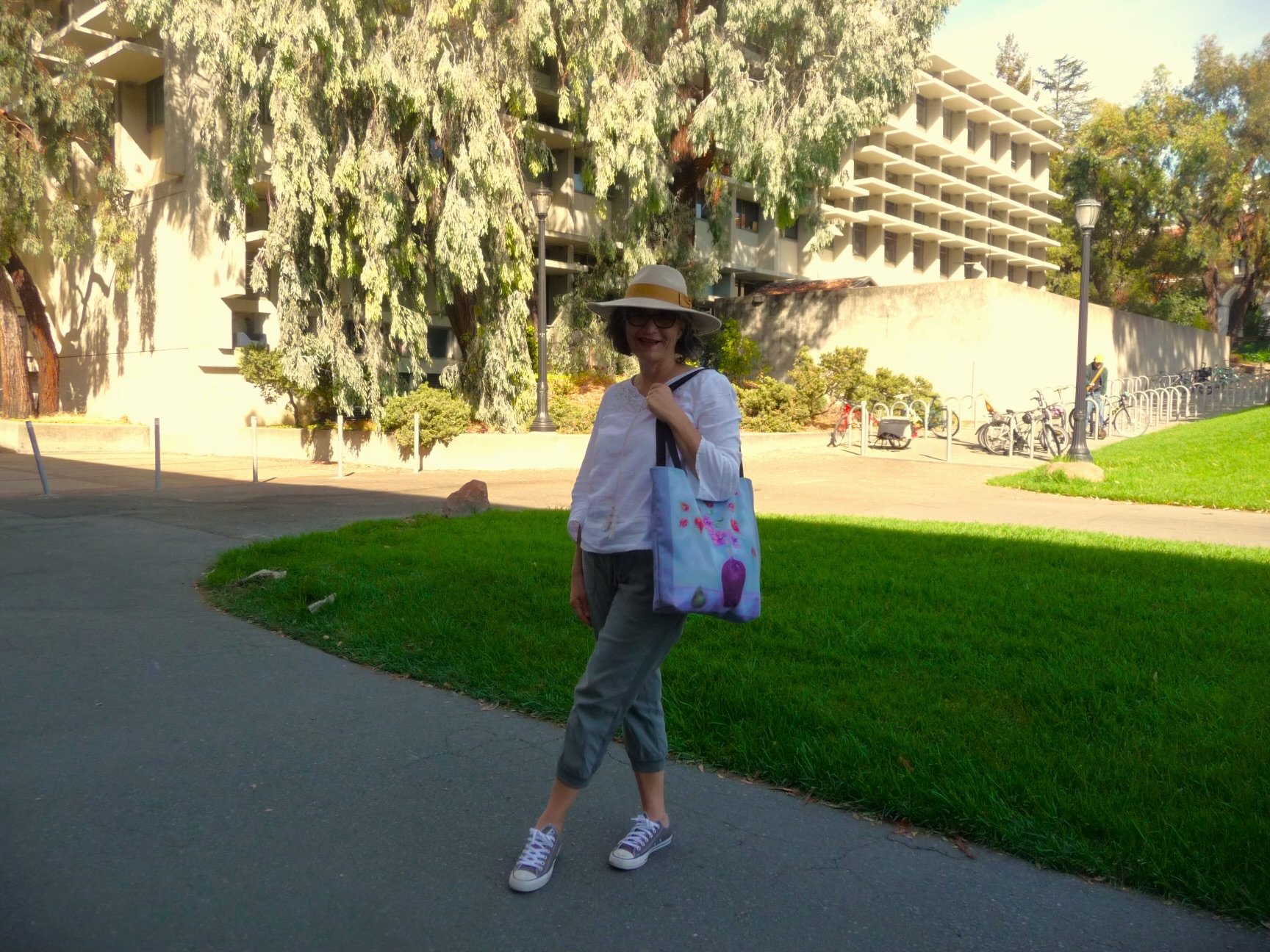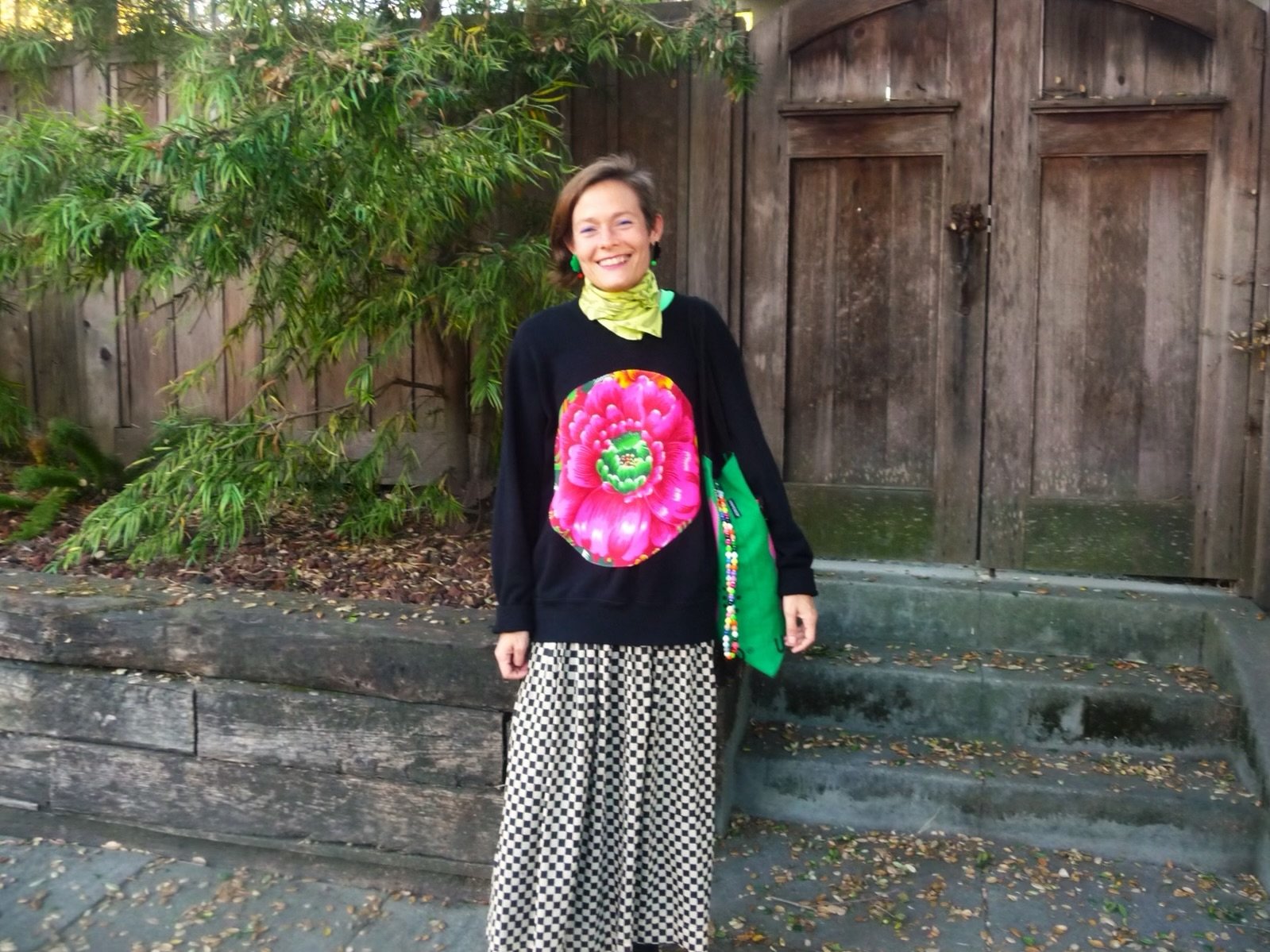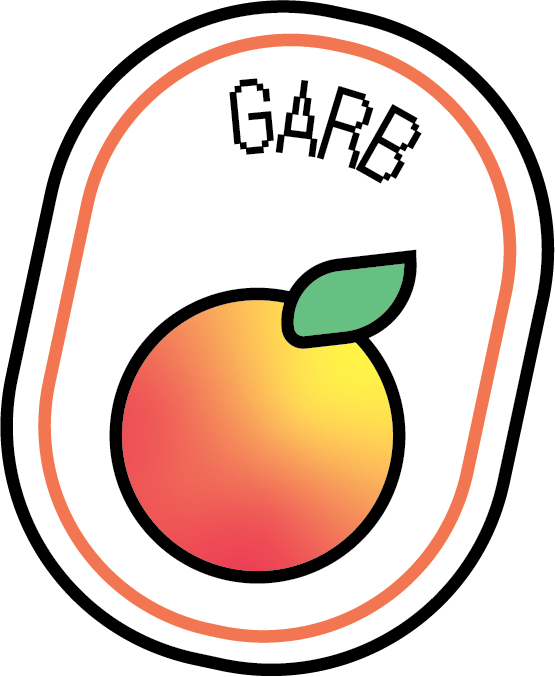GENERATIONS OF STYLE
To live in the present is to emulate the past. We float through an obscure river of nostalgia every single day, is there any wonder we yearn to return? Do we wish to escape to a time we can never have back- a time we may not have known at all, or do we simply find comfort in wearing its garments as they were worn by our foremothers and fathers, and theirs before them?
Anyone who is a chronic thrift shop addict like myself knows the feeling. The warm, assuring embrace of a hand-me-down cardigan, the burly, everlasting persistence of military boots, the faint smell of a perfume once worn on a thick woolen scarf. We find solace in their longevity, and attribute to them a period of time so foreign to us that a single loose thread can hold an acute sense of mystery. Unknown, and yet, known once again.
Clothes have a privilege that people, in all ways, are without. They have consistency. While a person navigates through their own life, they love, hate, cry, laugh, obsess, move on, and survive as years pass. Clothes contain an intrinsic contextual bond with the time they were produced and worn. By wearing the clothes from a time that has escaped us, or that we were never even a part of, we connect with our own humanity, on the inside and out; and while we change with each new season, our clothes remain the same, serving as a testament to their time.
It was through this thought process that an idea for generation-based interviews came to me; If I couldn’t talk to the clothes themselves, I’d have to settle with testimonies from the people wearing them.
A set of five questions were given to a wonderful group of participants, on and off UC Berkeley’s campus, and are as follows:
At what point in life did you start putting more thought into what you wear?
Has your style changed over time? How so?
If you had to describe your current style in 3 words, what would they be?
Who or what is your greatest inspiration when it comes to fashion and clothes?
Of the four interviewed, which generation generally has your favorite style?
Baby Boomers: Steve
“I’m seventy-five years old,” Steve began. “When I got to sixty-five, I had enough money, so I said I’ll buy whatever I want!”
His eyes twinkled as he spoke, and he looked down to the elaborate sweater he was wearing that day– a stark gray top adorned with a varying array of brown geometric patterns.
“I decided I really liked cashmere sweaters,” he said.
“You and me both,” I laughed.
“I’ll spend a couple hundred bucks on a cashmere sweater when I coulda’ spent 20 on an acrylic sweater… but it feels good.”
I wholeheartedly agreed. Cashmere is the champagne of fabrics.
“I grew up in the fifties and sixties– in the fifties people were pretty formal, and by the sixties everyone started wearing blue jeans and T-shirts, so I did!”
He continued, jogging his memory.
“When I went to work, in the eighties, I discovered that you get more respect if you wear a tie and suit, or a sport jacket, but I wore a shirt and tie without a jacket.”
“The way you were treated depended on how you were dressed– so if you were an executive you wore a suit. I’m a scientist, and a scientist is supposed to wear a tie.”
“Casual would be one,” he began, listing the words to describe his style. “I can’t use a single word, but I like wearing sweaters that are bright. Yellow, red, and blue… I like colors!”
His expression changed with the colors he listed, raising his eyebrows to denote each one.
“In the mid-eighties, there was this guy that wrote a book called Dress for Success. I learned all sorts of weird things…”
He continued:
“How do you tell if someone’s wearing a sports jacket that costs fifty dollars or five-hundred dollars?”
He asked this rhetorically, thankfully, mine cost $20 at my local thrift store and it looks the part.
“The five-hundred dollar one– the buttons are functional, they’re not just sewn on. Most important is that the collar lays smoothly against your neck.”
He knowingly gestured to his collar, then went on.
“It’s not that anybody cared about buttons, but it was a sign. You want to walk up to somebody, and they think ‘this guy is successful.’”
“I think the biggest influencers of style in my generation are The Beatles,” He said, nearing the end of our interview.
“When they started, they were all wearing suits and ties, then there was an album called Sgt. Pepper’s Lonely Hearts Club Band, where they’re wearing all these outlandish clothes, and everybody said, ‘I’m going to wear outlandish clothes!’ It had a huge influence on my generation.”
Generation x: Sophia
“In high school I sewed a lot of my own clothes, and I was just trying to figure out how to get some pretty basic, classic things. We didn’t have a lot of money, so I had to figure out how to be smart with what to wear– stuff that would last.”
Sophia was visiting her daughter during Parent’s Weekend, and was on campus dressed in a magnificently embroidered linen top and a sunhat, toting a colorful shoulder bag.
“I wasn’t always a person that was following the exact fashion that everyone else was following.”
“Back then, a lot of girls had to learn– either you take sewing or you take shop, and I went down the sewing route.”
“When I graduated from here,” she gestured to Berkeley’s campus, “I couldn’t afford a suit, so I made my own!”
“When I came to Cal, I dressed differently from everybody else, I was a much more conservative dresser then.”
Sophia continued, pointing to her current outfit.
“I’m not in an office anymore, and as you can tell I’m wearing some pretty casual, relaxed clothes, but I’m not walking around in sweats, I don’t think we need to be walking around in sweats… I see some kids walking around in pajamas!”
She shook her head, then laughed and said:
“Well, maybe if you had a final or something, I’d understand…”
“Relaxed, breezy and comfortable,” were the words she chose to describe her style.
I commended her for “breezy.” Great word.
“I’m not dressed like Audrey Hepburn right now, but she’s always been someone [I’ve admired] in her style of clothing.”
“All of her outfits– her Breakfast at Tiffany’s clothing, I mean, people are still wearing her styles right now!”
“She was the queen of getting classic pieces, just some pencil skirts and some flats. Her fashion just carried on for decades!”
“I’m a big fan of the fifties!” Sophia said when asked of her favorite generation in terms of style.
“It sort of carries on some of the Audrey Hepburn looks. It’s clean– it’s tailored– it just looks classic and elegant! People cared about what they looked like when they walked out the door.”
I commented about the longevity of the clothes during this time period, and she brought us back, full circle, to the beginning of our conversation.
“When you learn how to sew, you appreciate how clothes are made.”
Millennials: Alexandra
“Ever since I was a kid… my mom has had fun with fashion, so growing up it was something I was thinking more about.”
I met Alexandra while walking through one of Berkeley’s many suburbs; I was incredibly impressed and entranced by the composition of her outfit. Upon seeing her lime scarf, flower-printed sweater and striking blue eyeliner, I immediately asked her for an interview.
“As I’ve gotten older, I’ve just gotten more comfortable not following trends as much– wearing what I want to wear and what makes me feel good! I love wearing bright colors”
Alexandra described her style as “Colorful, mismatched and quirky.”
I noted that “mismatched” was a great euphemism for “clashing,” which has gained quite the reputation in fashion over the past few decades.
“I don’t believe in clashing,” she said happily. “Or even mismatched… I don’t know how to express it, maybe mixed!”
“I like seeing what other people are wearing,” she said, describing her greatest outside influence in fashion. “Other people that are really confident in their style, I think it’s really inspirational.”
“Bright colors and mixes of colors and patterns that you don’t expect! Different textile traditions from the U.S. like quilts– quilts I really like, traditional American folk quilts.”
She continued:
“Traditional Japanese origami paper patterns that are often inspired by different textile techniques are really cool.”
“I love the boldness of eighties fashion,” she said when asked of her favorite era of clothing. “Neon and glam aesthetics, and then sixties and seventies for similar ones; The caftan, flowy, not super restricted!”
“On the Cusp:” Eva
Originally, I had planned for a set of four interviews, one representative for each generation. During my conversation with Eva, however, I found out she was born in 1996, which is the last year before the Millennial generation switches to Generation Z. Learning this, I thought it would be interesting to include someone who is, in her own words, “on the cusp” of the two generations, and seamlessly blends the signature styles of both generations into a cohesive middle ground.
“Highschool– sophomore year specifically.”
This was when Eva’s style began to take root, according to her memory.
“I was really shy in freshman year… I was straightening my hair all through middle school and freshman year of high school, and it was sophomore year when I decided to stop.”
“I was feeling insecure about my hair, and wearing it natural, and I started dressing up to kind of compensate, and make myself feel more confident walking into classes. That’s where it started.”
That day, Eva wore a bold black leather jacket with embossments and a sharp lapel.
“I went to undergrad on the East coast, and lived in New York for several years. New York fashion absolutely influenced me.”
“In college– that’s when I began wearing heels a lot, and really started dressing up more, and that continued into New York.”
She went on:
“I was also working at a law firm, and there’s a very specific kind of dress that you’re supposed to wear– it’s very competitive. When I started dressing professionally, I wasn’t feeling great about myself, so I was like ‘I have to find a way to dress professionally without feeling… gross.’ Finding a happy medium where I still feel like myself if this is what I have to wear every day.”
“It was an evolution. I moved back to California, where I grew up, and was like ‘how do I bring the styles from New York and merge them with the California styles?’ I think the standard is different here, so there’s less worrying.”
I asked Eva to describe her style in three words, as I did with everyone else.
“It depends on where I’m going– I’m teaching today, so on days that I teach I usually do business casual, but fun, like lots of textures!”
“This is so cheesy, but my friends!”
This was Eva’s immediate response to her greatest influence in style.
“I wouldn’t say it’s particularly any style icons, it’s my friends. We journey through different styles together, we all influenced each other!”
She paused, smiling.
“Also Olivia Pope, kinda Shondaland– that era when I was in undergrad.”
“One thing I love about Gen. Z fashion is that they freed us from skinny jeans– because I grew up very firmly in skinny jeans.”
I couldn’t contain my excitement when she said this– finally some recognition. I then acknowledged that skinny jeans were cool at the time…
“Oh yeah!” She laughed. “And I still have a few, but wearing baggy pants is really nice, and that’s something I’ll give Gen. Z a lot of credit for.”
“I feel like a lot of my style icons are millennials because of when I grew up. I think Millenials and Gen Z. are just going to have to vie it out!”
I jokingly asked if she thought skinny jeans would ever come back as a trend, something I think everyone’s been wary of over the past few years.
“I think part of it is that comfort is now a really big part of [fashion], and skinny jeans are not comfortable… I’d be surprised!”
Generation Z: Elias
This one was tough. There’s so many of you! Who alone could be worthy of representing not only our student body, but an entire generation?
I met Elias as he sat on a bench across from me. His boots called out to me, and, as an author’s side note, I may very well buy a pair as soon as this article is written.
“Getting into middle school– that’s when I started to shop for myself a bit… I started with like, H&M and Forever 21,” he laughed. “Towards eighth grade, [I shopped at] Top Shop, which I think is a tier above H&M.”
“In highschool I started thrifting a little bit, and in 2021, you know– you get your first job, you get a little more money.”
“Nowadays I stick to pretty curated vintage stores. I'm from LA, I definitely have a couple spots down there that I really like.”
We shared our favorite flea markets and vintage stores in SoCal, where we’re both from, and he kindly gave me a few shopping recommendations in the bay.
Elias went on about how his fashion has evolved over time.
“I began with button up shirts, that was my way of elevating my style. Now I typically stay with vintage clothing, anywhere from the 50’s to the 70’s.”
“I think now I’m changing it up a bit, leaning into some grunge styles, but I haven’t really taken the time to see what that really means, or understanding the culture that surrounds it.”
Elias described his style in three words:
“Comfortable, historical… I want a word that describes individuality, but not in a cringe way… more like an extension of myself.”
I asked him of his greatest influence in style, and he thought for a few moments.
“My dad,” he smiled. “He does it in a certain way, I can tell when it’s an outfit he would wear, but I still feel like it’s very unique to him. I appreciate when someone is able to associate certain clothing to me [and themself].”
“My dad’s Algerian, but he grew up in France, so he’s definitely into Fred Perry, Ralph Lauren and all that. [Clothes] he would give me as I was going into high school were definitely formative.”
“I think this will happen with every generation, looking back in time to find inspiration, but I fuck with Gen. Z’s style. I like when people look back to the 2000’s and find their style, also transforming it into something that’s more relevant.”
“I know it’s like, a meme, but I fuck with the New York Wizard outfits– typically wide necks and flowy shit.”
Reflection
This project was a learning experience for myself, as well as the participants I included within. In an ideal world, I would have interviewed hundreds of different people across several cultures, locations and generations to get a more well rounded understanding of what style means to human beings on this side of modernity.
I find it unfortunate, but at the same time, very culturally fitting that such a small sample size
was used as the determining factor for a stylistic representation of each generation in its entirety.
In small moments of judgment we look for style with our eyes, predominantly, but if we delve deeper into the pockets, and tear off the plaid patches of external performativity, we don’t only see more, we feel it. An outfit alone can detail a life well lived, a closet, an entire lineage, and a home nearly an eternity.
With what little influence I have as the author of this project, I would implore the reader to extend my work further. Ask your mothers and fathers, your coworkers, teachers and friends what their jacket means to them. Ask them why they wear mismatched socks, where that rip in their jeans came from; the opportunities to unfold a life’s story are yours to explore.
Overall, I learned far more from this project than I had originally expected. Even in the smallest statements, rhetoric consistencies were present in each, and it was very interesting to hear where different generations placed value in what they wear, and have worn in the past.
While each person cannot, of course, represent an entire generation alone, each of their responses gave way for more inquiries and observations about attitudes towards clothing based on age, cultural affiliation and life experiences.
Here are a few consistencies in responses I noticed.
Of the five generations:
Two described their personal style using the presence of colors.
Three mentioned money as a determining factor for the clothes they had.
Three referenced people in their lives that influenced their style.
Three referenced celebrities that have inspired their style.
Four listed their favorite generational style as one in the past.
All five referenced a sense of performativity that determined their style at one point in life.






